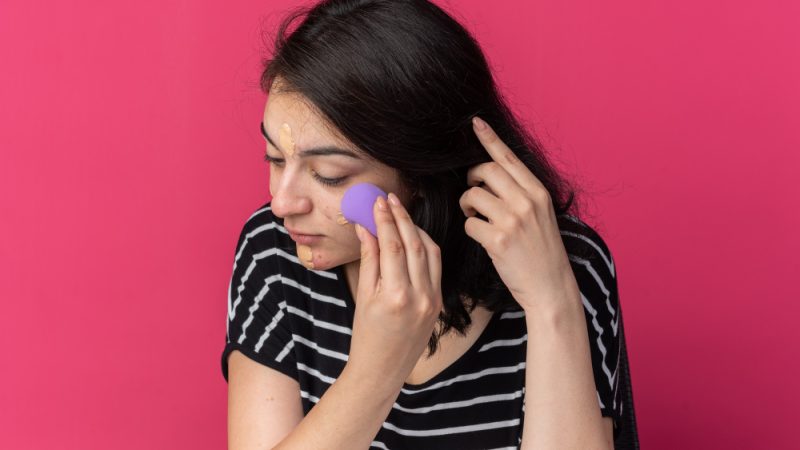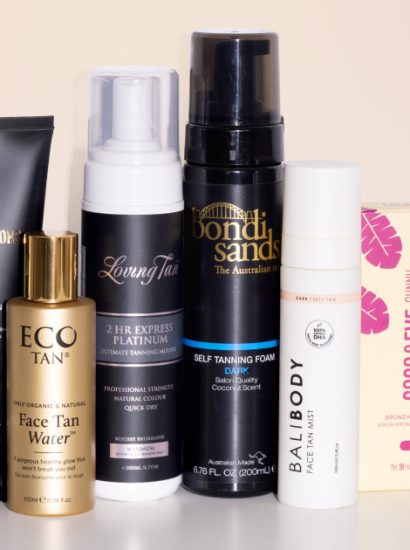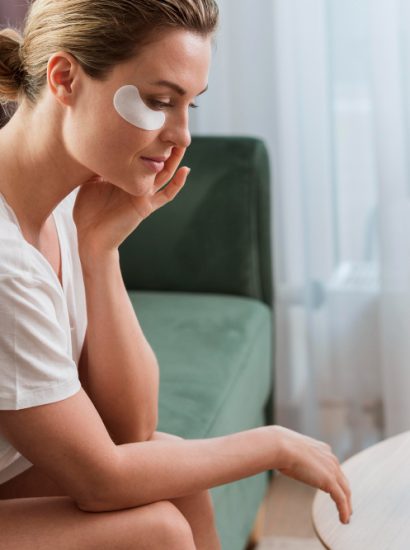Pimple patches have become a skincare must-have for anyone dealing with unexpected breakouts. They promise to shrink pimples overnight, reduce redness, and prevent picking — all in a small, invisible patch. But how long should you actually keep a pimple patch on? Is overnight wear safe, or should it be removed sooner?
Understanding the right duration for wearing a pimple patch is key to getting clear results without irritating your skin. In this article, we will explore what pimple patches are, how they work, and how long you should wear them to get the best outcome.
What Is a Pimple Patch?
A pimple patch is a small, round sticker designed to protect and heal acne spots. It is made from a material called hydrocolloid, which absorbs excess fluid, oil, and pus from the blemish. The patch acts as a protective barrier, keeping bacteria and dirt away from the pimple while helping it heal faster.
Some advanced versions also contain acne-fighting ingredients such as salicylic acid, tea tree oil, or niacinamide to further reduce inflammation. These small patches are easy to use and nearly invisible, making them suitable for daytime or nighttime wear.
How Do Pimple Patches Work?
Pimple patches work by creating a moist environment that promotes healing. The hydrocolloid material draws out pus and oil from the clogged pore, which flattens the pimple and reduces redness.
As the patch absorbs impurities, it turns white or cloudy — a visible sign that it has pulled out fluids. At the same time, it prevents touching or picking at the spot, which is one of the biggest causes of acne scarring. By sealing off the pimple from bacteria and dirt, these patches allow your skin to recover naturally and more quickly.
When Should You Apply a Pimple Patch?
Timing is essential when it comes to applying a pimple patch. It works best on pimples that have come to a head — meaning they have visible white pus or are about to pop. Applying a patch on open or popped pimples can also be effective since it absorbs leftover fluid and protects the skin from infection.
If the acne is still deep under the skin or cystic, the patch may not help much, as it cannot penetrate that far. For those deeper pimples, look for patches with active ingredients like salicylic acid or retinol, which can work beneath the surface.
Always cleanse your face gently before applying the patch to ensure it sticks properly and works efficiently.
How Long Should You Wear a Pimple Patch?
The ideal time to wear a pimple patch depends on the type of patch and the severity of your pimple. Most hydrocolloid patches can be worn for 6 to 8 hours, which makes overnight use a convenient option. During this time, the patch absorbs fluids and starts healing the spot.
If the patch turns white or starts to lift off, it’s a sign that it has done its job and should be replaced. Leaving a patch on too long after it has become saturated can reduce its effectiveness and might cause slight irritation.
For patches with active ingredients, always follow the instructions on the packaging. Some medicated patches are meant for shorter wear, usually 2 to 4 hours, especially those containing strong ingredients like salicylic acid.
Can You Wear a Pimple Patch Overnight?
Yes, most pimple patches are safe to wear overnight. In fact, this is when they work best, as your skin repairs itself while you sleep. Wearing one overnight allows it to absorb fluid without interference from makeup, sweat, or environmental pollutants.
Apply the patch before bed on clean, dry skin, and remove it in the morning. You will often notice that the patch has turned white, meaning it successfully drew out impurities. Rinse the area with mild cleanser and apply a lightweight moisturizer afterward to maintain skin balance.
Can You Wear a Pimple Patch During the Day?
Absolutely. Many pimple patches are now designed to be ultra-thin and transparent, making them ideal for daytime use. Some even come with matte finishes that blend seamlessly under makeup.
If you wear one during the day, try to keep it on for at least 6 hours to allow the patch enough time to absorb fluids. Avoid applying thick makeup layers over it, as that can reduce its ability to breathe and heal the skin properly. Daytime patches are great for preventing bacteria from touching your blemish while you’re out and about.
What Happens If You Wear a Pimple Patch Too Long?
Wearing a pimple patch for too long may not harm your skin immediately, but it can reduce its effectiveness. Once the patch has absorbed as much fluid as it can, it becomes saturated and stops working.
If left on too long, it may trap moisture against the skin, which can sometimes cause mild irritation. For sensitive skin types, extended wear can lead to redness or dryness around the pimple area.
To avoid this, change your patch as soon as it turns white or starts to peel off. If your pimple is still active, apply a fresh patch after cleansing the area.
How Many Times a Day Can You Use a Pimple Patch?
You can safely use a pimple patch twice a day — one during the day and another overnight. However, always give your skin a short break between applications to allow it to breathe.
Once the patch has done its job and the pimple has flattened, avoid overusing patches on the same area. Overuse may cause dryness or disrupt the natural healing process. If the blemish persists after two to three days of patch use, it might be time to try a topical spot treatment or consult a dermatologist.
Tips for Using Pimple Patches Effectively
To get the best results from your pimple patches, follow these helpful tips:
- Cleanse thoroughly: Wash your face with a gentle cleanser to remove oil and dirt before applying a patch.
- Dry completely: Make sure your skin is dry; moisture can prevent the patch from sticking properly.
- Choose the right size: Use a patch that completely covers the pimple and seals the edges.
- Avoid touching: Once applied, do not peel or move the patch frequently.
- Replace regularly: Change the patch once it becomes white or after 8 hours of wear.
- Moisturize after removal: Rehydrate the skin with a lightweight moisturizer to prevent dryness.
By following these steps, you will ensure that the patch adheres well and heals the blemish efficiently.
Who Should Use Pimple Patches?
Pimple patches are suitable for most skin types, especially those prone to whiteheads or surface pimples. They are great for people who have a habit of touching or popping their acne, as they act as a barrier.
However, if you have severe cystic acne, these patches may not provide deep relief. In such cases, consult a dermatologist for professional treatment options. Those with sensitive skin should also check ingredient lists for potential irritants such as alcohol or strong acids.
Conclusion
Pimple patches are a simple yet powerful solution for managing breakouts. The key to seeing visible improvement is knowing how long to wear them. In most cases, 6 to 8 hours is ideal — long enough for the hydrocolloid material to absorb impurities and flatten the pimple.
Wearing a pimple patch overnight or during the day can help speed up healing, reduce redness, and prevent further irritation. Just remember to cleanse your skin, replace the patch when it’s saturated, and moisturize afterward. With consistent use, pimple patches can become your go-to method for achieving clearer, healthier skin naturally and safely.
FAQs
1. How long should I wear a pimple patch overnight?
You can wear a pimple patch overnight for about 6 to 8 hours. This allows it to absorb pus and oil effectively while protecting the area as you sleep.
2. Can I reuse a pimple patch?
No, pimple patches are single-use. Once it has absorbed fluid, discard it and use a fresh one if needed.
3. What if the patch falls off before 6 hours?
If it falls off early, you can replace it with a new one. Make sure your skin is clean and dry before reapplying.
4. Can I wear makeup over a pimple patch?
Yes, many modern patches are thin enough to wear under makeup. However, avoid heavy foundation that may prevent the patch from working effectively.
5. Do pimple patches work on cystic acne?
Traditional hydrocolloid patches are best for surface pimples or whiteheads. For cystic acne, choose medicated patches with salicylic acid or consult a dermatologist for stronger treatment options.
Also read: How to Get Blonde Hair Without Bleach: 10 Natural Lightening Methods That Work





